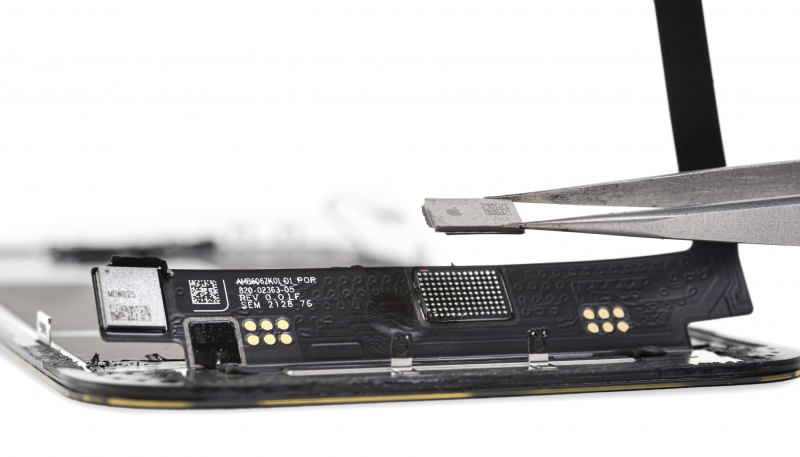iFixit said today that the inability to replace the iPhone 13’s display without breaking Face ID could have a degrading impact on firms offering third-party iPhone repairs. The comments were included in an article advocating for Right to Repair laws.
iFixit says the iPhone 13 completely disables its flagship Face ID functionality when you replace its screen. iFixit says it has confirmed this repeatedly in its lab, testing with many different phones on iOS 15 and 15.1, and that its results have been replicated by numerous repair professionals.
iPhone displays repairs have previously been done with hand-held tools, but the iPhone 13 requires a microscope and micro soldering tools or access to Apple’s Independent Repair Provider Program.
The culprit is a small microcontroller that pairs the iPhone 13 to its display. iPhone 13 owners or repair shops not enrolled in the Apple repair program do not have the tools needed to pair a new screen to an iPhone 13. Authorized technicians use Apple Services Toolkit 2 to log a repair to Apple’s cloud services, which connect the serial numbers of the iPhone and the display.
While some repair shops have found a workaround but it is difficult to pull off. A soldered chip must be moved from the original display to the replacement. iFixit points out that screen repair is “incredibly common” and accounts for a goodly number of the repairs performed by independent repair shops.
iFixit says the issue could cause small repair shops to shut down, pay a large amount of money for new equipment, or simply stop doing Apple repairs.
Technically, yes: Face ID failure could be a very specific hardware bug for one of the most commonly replaced components, one that somehow made it through testing, didn’t get fixed in a major software update, and just happens to lock out the kind of independent repair from which the company doesn’t profit.
More likely, though, is that this is a strategy, not an oversight. This situation makes AppleCare all but required for newer iPhones, unless you happen to know that your local repair shop is ready for the challenge. Or you simply plan to never drop your phone.
Independent repair shops that iFixit spoke to believe that Apple has made this change to “thwart a customer’s ability to repair,” forcing iPhone owners to go to Apple retail locations or Apple Authorized Service Providers for display issues.


